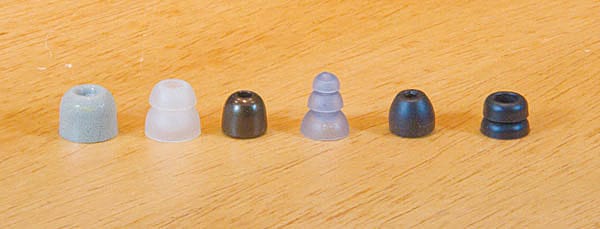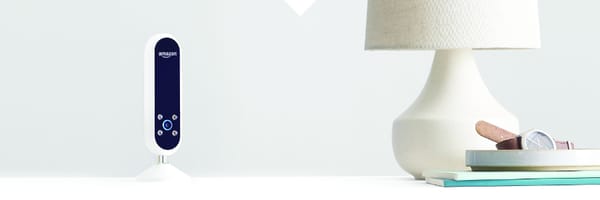The Audio Focus: An introduction to over-ear IEMs
Could these new earbuds help you avoid external noise?

If you frequently turn up the volume on your earbuds to overcome external noise, you are at a high risk of noise induced hearing loss over time. The average hearing threshold for a young adult lies between 18 to 20 kHz, but can fall to as low as 15 to 16 kHz due to long exposure to sound above 85 decibels. At full volume, a typical earphone can reach above 100 decibels, able to cause long-term damage to the ear after exposures of just 15 minutes.
Over-ear IEMs (in ear monitors) differ from your “regular” earphones by being worn with the cable going over around the back of the ear and inserted deeper into the ear compared to earpods or regular earphones, which sit at the opening of the ear canal. This comes with several benefits:
Depending on the tip, a well fitting over-ear IEM can reach between 30-40 decibels of noise isolation, reducing the noise of a car going at 50 mph (~ 70 dB) to the ambient noise of an empty room (~ 40dB). While ANC (active noise-cancelling) headphones can also achieve this, they are bulkier, require charging, and work best with “white” noise; constant noise such as the sound of a plane engine. They are much less effective against sudden changes, such as loud conversations, whereas IEMs reduce all noise equally by physically blocking your ear canal.
Due to the noise isolation, IEMs allow you to listen to music at lower volumes, thereby reducing the risk of ear damage. Volumes at 70 decibels and below are rated safe for constant exposure, but as typical advice, it is recommended that you turn down the volume as low as possible while still being able to hear the music.
Reduction of “microphonics”, which are the vibrations transmitted through the wire of your earphones when they are moved, resulting in those annoying rustling noises. By wearing IEMs over the ear, the vibrations are dampened by a great amount.
Improved sound quality can be achieved with a proper fit. The wavelengths of frequencies in the range of 10 to 13 kHz are short enough that acoustic resonance can occur between the earphone output and eardrum when inserted insufficiently deep, causing the symptom known as “sibilance” (a harsh spike in volume at higher frequencies). In addition, subbass (the rumble at frequencies < ~100 Hz) quantity is greatly improved by a proper seal. For example, the apple earpods lose up to 25 decibels in the subbass due to their more open design. Given that a change in 2-3 decibels can be noticeable in critical listening, this difference is extremely obvious in certain songs (for example Lorde “Royals” and Hans Zimmer “Why so serious?”).
Many new models come with modular cables, allowing a replacement if they are damaged. They can also be attached to a bluetooth module to turn them into wireless IEMs.

However with all their benefits, over-ear IEMs also come with certain drawbacks:
Getting a proper fit can be difficult and time-consuming, but usually it is easy to tell when you have achieved it, as the amount of noise isolation and sound clarity jumps to a new level. To achieve this, different tips may have to be tried until the best one is found. A popular (but more expensive) option is using memory foam tips (In the below picture, 3rd from left), which compress to fit in the ear and then expand to fill the ear canal. These often come standard with higher end IEMs. Some IEMs may also be too physically large for smaller ears and this can be difficult to tell when purchasing online.
A deep fit using triple flanges (below, 3rd from right) may be uncomfortable to those with sensitive ears, and a shallower fit will provide a smaller (but still good) amount of noise isolation.
Personally over the last 6 months I have been using the Shure SE846 (RRP: £829) along with dual-flange silicone tips (below, 2nd from the left), resulting in incredible noise isolation and sound quality on the go. Without going too much into the technical details, the special feature of these IEMs is that they have certain technology which allows a clearer delivery of sounds below 90Hz, resulting in a feeling of having miniature subwoofers inserted into your ears, in addition to filters which can vary the sound by a small amount. When they are properly in place:
- _The ambient noise of an empty room sounds “loud” in comparison
- With music playing, a busy street is inaudible, and the underground is barely audible. Plane noise is virtually inaudible and only the vibration can be felt.
- Roads have to be triple checked before crossing.
- Annoyed parents have to be dealt with for not responding to calls across the room._
Now, good IEMs don’t have to cost an arm and leg, as they can range from as little as £10 to as much as £3000. At a premium cost, you can also get IEMs that are custom silicone moulded to the shape of your ear, for increased comfort. However, these require a visit to the Audiologist and can take weeks to make and deliver, and may not fit anymore within a few years as the ears are still growing and changing in the majority of young adults.
Several companies in the past year have been working on creating 3D printed custom moulds out of 3D scans, or even phone pictures, in order to speed up the process, but this is still a relatively new technology.
If you’ve come this far, and are willing to give up a few days worth of coffee for an improved listening experience, unfortunately there are few universal recommendations. Each person’s sound and fit preferences vary. It can be worth visiting one of London’s audio shops and see what they have in store to demo.
Otherwise, many new brands from China have been offering great value IEMs for around £10 to £30, but delivery from Aliexpress can take a few weeks. Some are also available from Amazon at a markup.
Some choices available directly from Amazon: KZ ATE (£13), MEE M6 Pro (£25), Shure SE215 (£90), RHA MA750 (£80), FiiO FH1 (£80).









